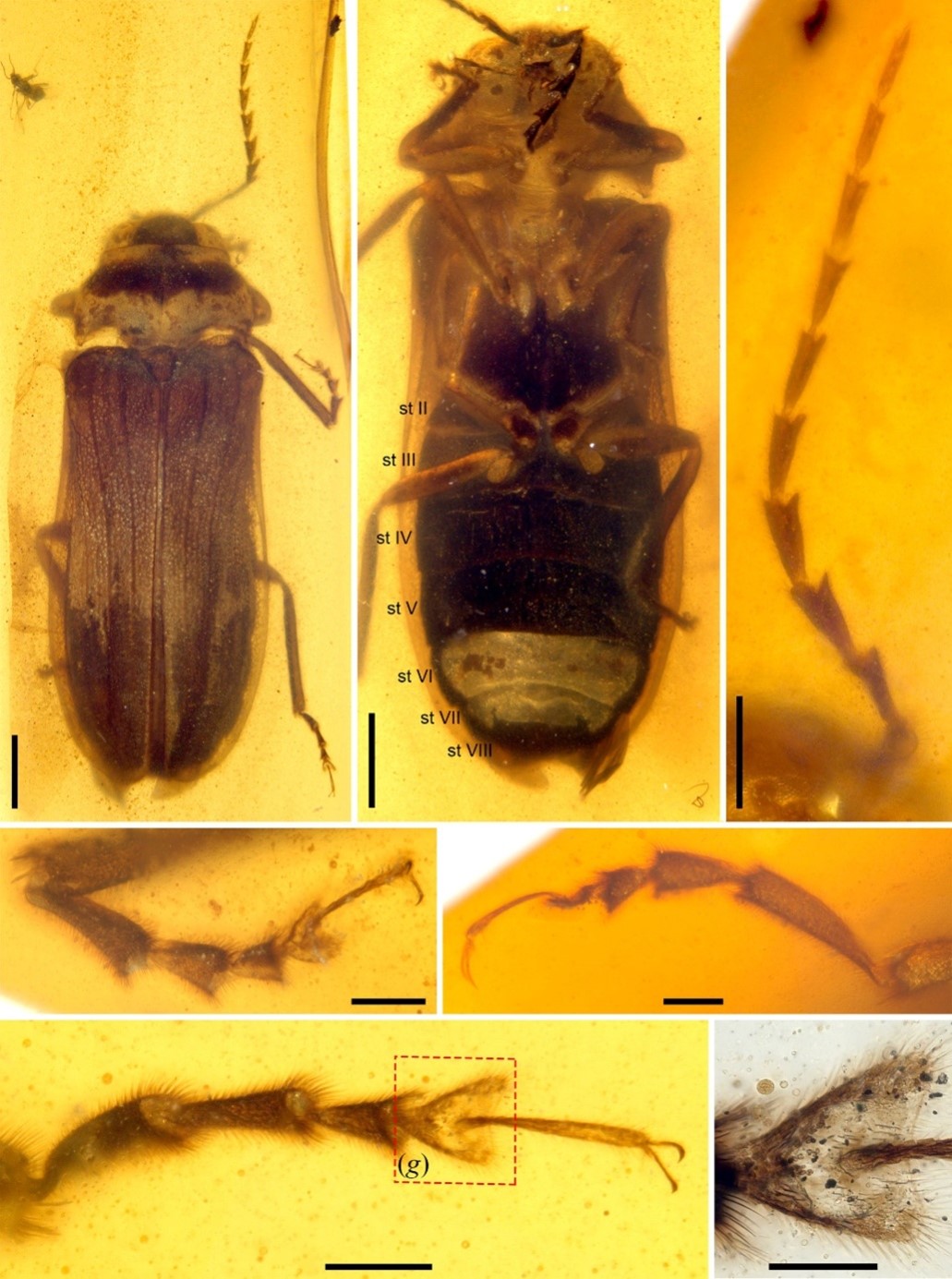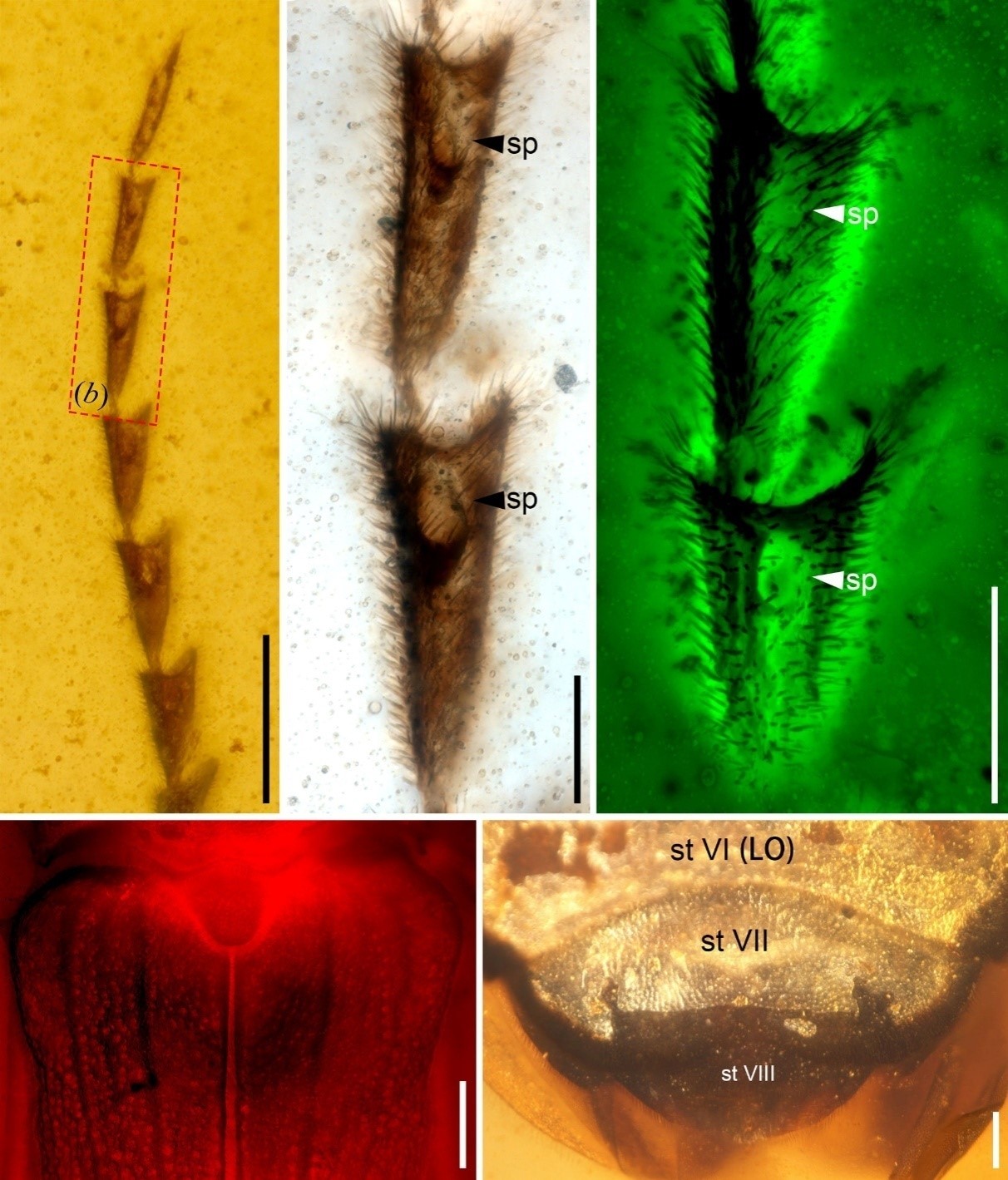Bioluminescence, the ability of living organisms to emit light, is a fascinating phenomenon observed in various life forms, including deep-sea fish, glowing mushrooms, and fireflies. Fireflies have long captivated people with their enchanting light displays, sparking scientific curiosity.
Recently, Prof. CAI Chenyang and colleagues from the Nanjing Institute of Geology and Palaeontology, Chinese Academy of Sciences (NIGPAS), alongside researchers from the University of Cambridge, University of Bristol, Charles Sturt University, the American Museum of Natural History, and Palacký University, described the second known firefly fossil from the Mesozoic, found in Burmese amber. This discovery is significant for understanding the evolution of firefly bioluminescence and key traits.
This research was published on Proceedings of the Royal Society B.
In today’s terrestrial ecosystems, most bioluminescent organisms belong to the order Coleoptera (beetles), particularly the superfamily Elateroidea (click beetles, fireflies, and their relatives). Among Elateroidea, a majority of bioluminescent species are part of the “lampyroid” clade, which includes the families Lampyridae (fireflies), Phengodidae, Rhagophthalmidae, and Sinopyrophoridae. While most species within these families have soft bodies, and some females exhibit neoteny, this makes them difficult to fossilize.
Firefly fossils from the Mesozoic era are extremely rare, with only one example previously reported. In 2021, Prof. CAI’s research team discovered a new family of Elateroidea in mid-Cretaceous Burmese amber, named Cretophengodidae, representing a transitional stage in the early evolution of lampyroids. However,
The researchers identified a well-preserved female firefly from mid-Cretaceous Burmese amber, approximately 100 million years old, representing a new genus and species, Flammarionellahehaikuni Cai, Ballantyne, &Kundrata, 2024. Based on morphological analysis, the fossil was classified within the basal lineage of the subfamily Luciolinae (Lampyridae).
This species’ antennae feature distinctive oval-shaped sensory receptors on segments 3 to 11, likely specialized olfactory organs. The light-emitting organ near the tip of the abdomen closely resembles those of modern Luciolinae fireflies, demonstrating evolutionary stability in this trait.
Together with previously discovered bioluminescent beetles from Cretaceous amber, this study highlights the morphological diversity of light-emitting organs in the Mesozoic era, greatly enhancing our understanding of the evolutionary history of bioluminescence in Elateroidea. Future fossil discoveries are expected to further illuminate the evolution and mechanisms behind insect bioluminescence in the Mesozoic.
This research was supported by the National Natural Science Foundation of China.
Reference: Cai, Chenyang, Tihelka, E., Ballantyne, L., Li, Yan-Da, Huang, Diying, Engel, M.S., Kundrata, R. (2024). A light in the dark: a mid-Cretaceous bioluminescent firefly with specialized antennal sensory organs. Proceedings of the Royal Society B, 291: 20241671. https://doi.org/10.1098/rspb.2024.1671.

Fig.1 Habitus of Flammarionellahehaikuni Cai, Ballantyne &Kundrata, 2024, from mid-Cretaceous Burmese amber. (Image by NIGPAS)

Fig.2 Morphological details of Flammarionellahehaikuni. (Image by NIGPAS)
Download:
